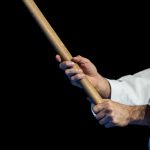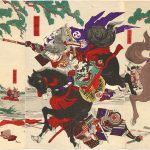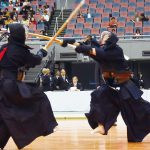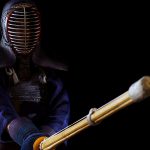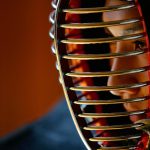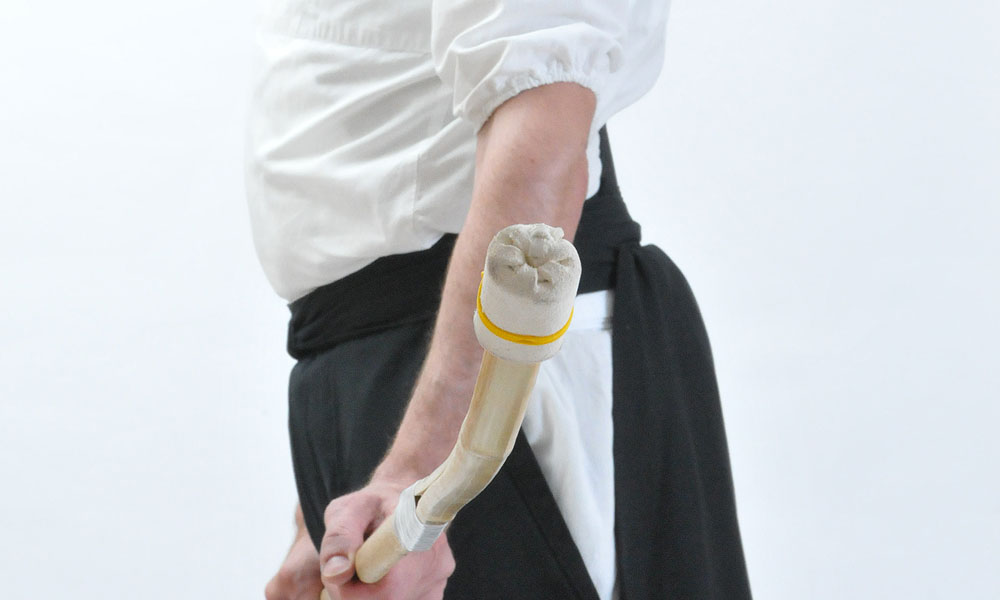
Written by Jeangerard Hughes (Former member of Tozando, Naginata 5-dan)
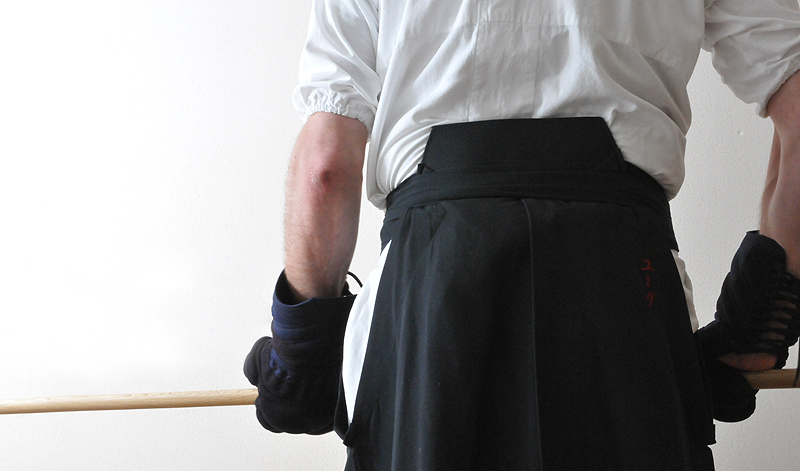
It feels tautological to say that the naginata (the wooden weapon) is at the core of your Naginata (the martial art). In few other arts you are supposed to make one with your weapon to the point that you are most of the time simply required to stick physically to it through waza process. Also naginata is a huge weapon, with length ranging from 212 to 225 cm for the AJNF1 standard versions, revealing qualities or on the contrary amplifying default, both in the weapon and the techniques.They are also quite costly to come by, so you want it to endure and stay through years. Naginata being less widely popular than Kendo or Iaido, occasions to look and compare equipment are scarce.
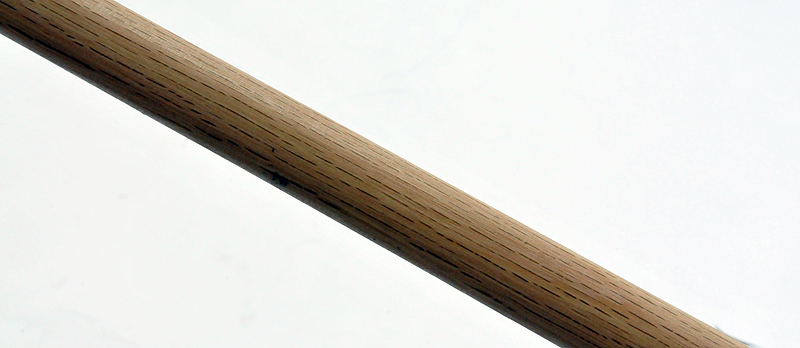
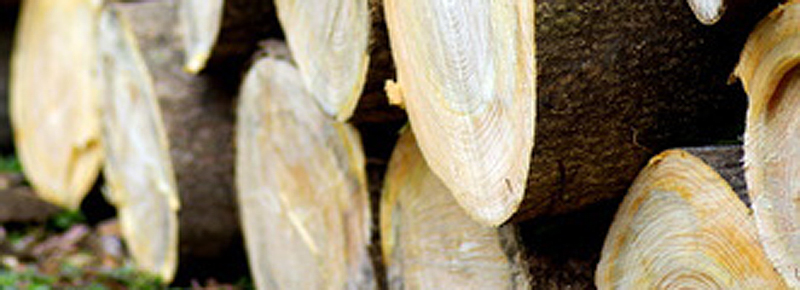
Here I will very modestly try to help you keep a few important things in mind when testing a naginata, or when researching information about them online. Let’s start with the material. Naginata are traditionally made of Kashi (Japanese Oak), the ubiquitous material when talking Japanese wooden weapons. It is by no way the best wood in the world, only one of the most widely available in Japan for such crafts. Kashi is resistant to impacts and denting, with a uniform grain due to its continuous growth, whilst still being flexible enough. Two subspecies are used: the white Shiragashi and red Akagashi. There are plenty of other awesome woods available that you can make naginata from around the world, but most naginata available for regular sale will be made of Kashi or a wood resembling to it.
But not all woods have the proper balance of resistance and flexibility to make a good naginata.
And not all Kashi planks are suited to make a weapon. Pursuing the details would lead us far off track and as you won’t have a carpenter at hand each time you want to buy a naginata, just remember these following important points:
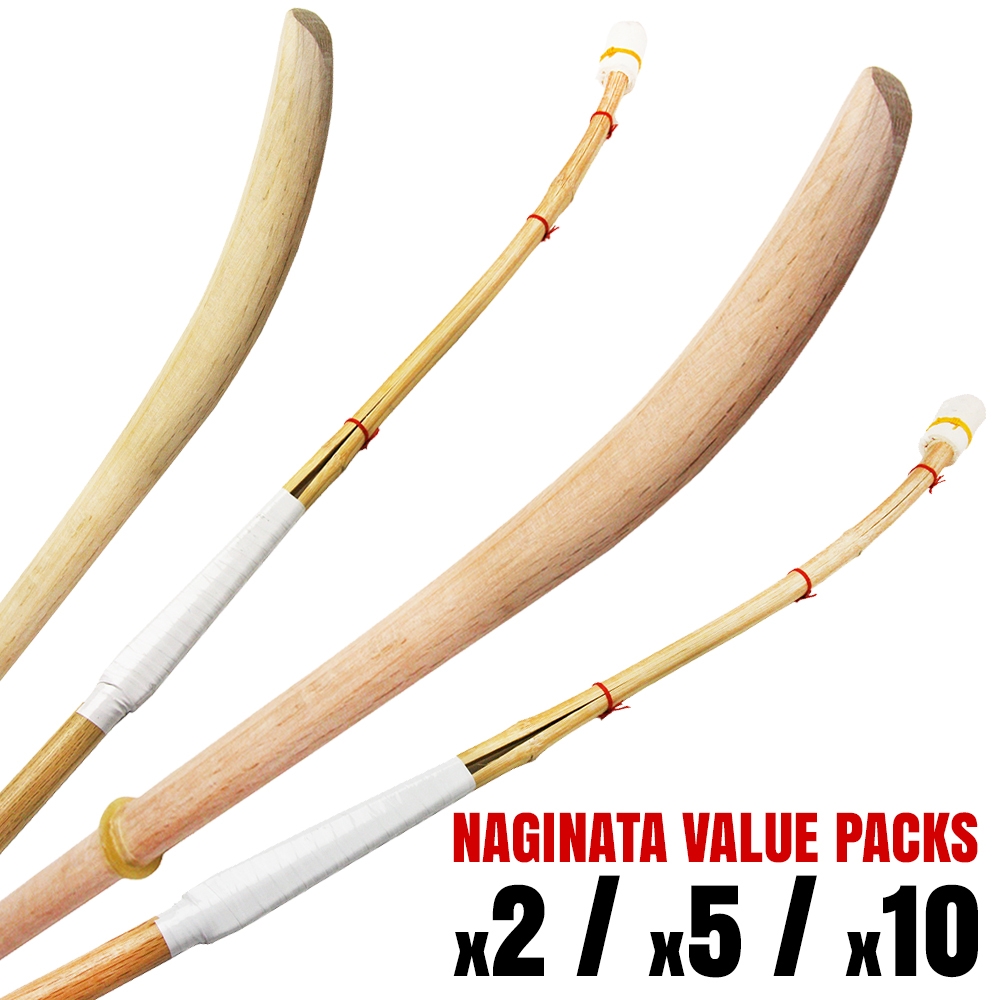 | Naginata Value Packs EXCLUSIVE! Starting at $191.00 |

Regular and uniform grain.
Look for wide differences in the wood pattern, or worse, knots. Grain should be longitudinal to the weapon, ideally following all the way along its length without warping. The tighter the grain, the denser and more dent resistant the weapon will be.
Wood Growth Rings
The highest quality weapons will have growth rings running in the same direction of the striking direction. This is however not always the case because it would mean wasting lots of wood so take what you can get.
➤With the kata naginata you can see it by looking at the ishizuki butt where transverse face of wood is apparent.
➤ For a shiai naginata often affixed with leather ishizuki, look if the pattern of the wood is the same on top and bottom, and different from the pattern seen on left and right side2. This pattern also should not twist around the length of the naginata.
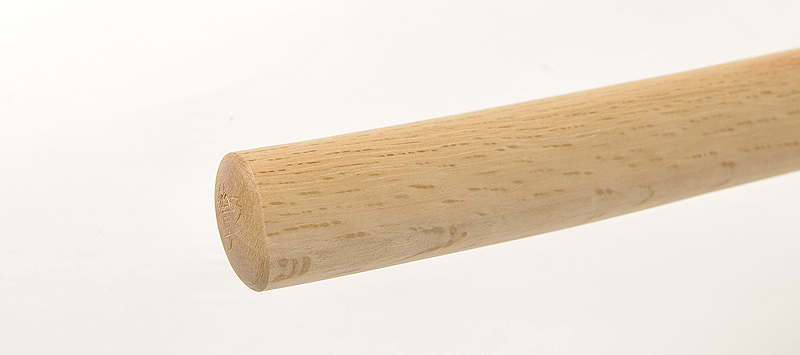
Which then leads us to the craftsmanship.
No matter how good the piece of wood is, it will not become a naginata unless some serious skills is put at it. And we are talking years of practice here. Practice required to choose the right raw material and form it into the proper shape.
Being straight, naginata look somewhat easier to make than curved bokutō3. It would be if it was not also tapered, and with an oval shape.
The tapered e-bu (柄部, shaft) provides better balance and is a key feature of how smoothly you will be able to do Naginata, that is swinging a long piece of wood around with elegance and strength, and allows you to give it life as a weapon.
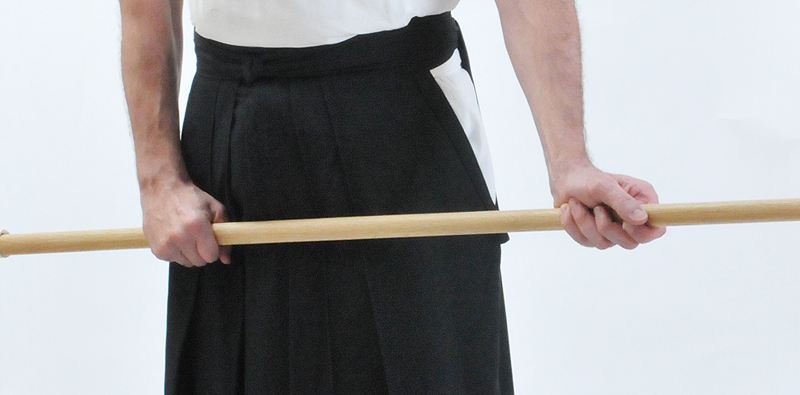
The oval shape pertains to the notion of te-no-uchi (手の内) or grip.
This particular shape is better suited to the grip of single edged weapons like the Naginata, where all this swinging must be done in a particular direction, that of the proper cut (hasuji). There is also a number of ōji-waza (defensive techniques) that make use of this shape to be properly executed (think about maki-otoshi4).
And sometimes, beautifully shaped bokutō or naginata look so perfect that one can imagine them getting out of a machine. Nothing could be more wrong. If the rough shape is indeed cut out with an electrical saw, all the finish and forming is via plane, sandpaper, sweat and years of practice. And giving the naginata a regular taper on such a length, and keeping the oval evenly balanced all along sure requires great skill.

At Tozando we work with the most famous Japanese workshops in Japan.
In Miyakonojo, at the heart of wood weapon making, craftsmen have polished their skills over decade to be able to produce, again and again, beautiful and well-balanced naginata of all types.
In this, experience is paramount and over the years those workshops have produced hundreds of naginata, be that for shiai, kata or koryū practice.
All the naginata we sell are 100% made in Japan, from the raw materials to the handcrafting and mounting.
In the past these workshop and craftsmen have worked closely with teachers and heads of martial traditions (Koryū Sōke) to design the models we use now. And this continues as we interact with them regularly to conjure their expertise on new ideas for new public and custom designs.
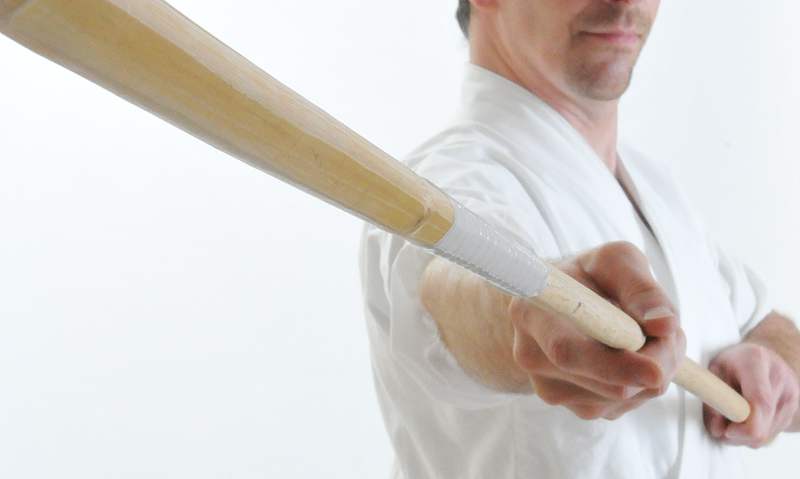
Full Length naginata
One example is the elaboration of Tozando version of the Full Length naginata, colloquially called “dansei-yo naginata” in Japan (“naginata for men”).
Our’s however has been thought first and foremost for foreign practitioners, among whom tall and strong people are a new normal in the Naginata scene. We relied on the craftsmen expertise to find the ideal balance and thickness for that length.
And that is the third point about choosing a naginata, choosing the one right for you5.
Light or Heavy?
There is a trend running in the naginata world that says “the heavier the better”. It is true that a heavy naginata will be be more rigid, feel more like “the real thing”. No easy swinging about with your arms, you must use your whole body to perform techniques. Also, properly handled inertia of the naginata helps you perform naginata smoothly and naturally. However, too heavy might cause muscle and tendons strain or even injury if you are not accustomed or trained enough. Notably, minor to mild pain in elbow tendons is not uncommon when training with weapons that are too heavy.
Lightweight naginata are easier to get accustomed to and would be the right choice for a beginner with no or little experience or training. But beware as you advance of the trick of light weapons. As you get stronger you will move it easily, but maybe end up relying on arm strength alone.
On the other hand, lightweight weapons can be a very interesting tool even for advanced practitioners, as a light weapon will reveal more blatantly if you use too much arm strength, or too much front end strength. Naginata bouncing on your partner’s parry, ring a bell?
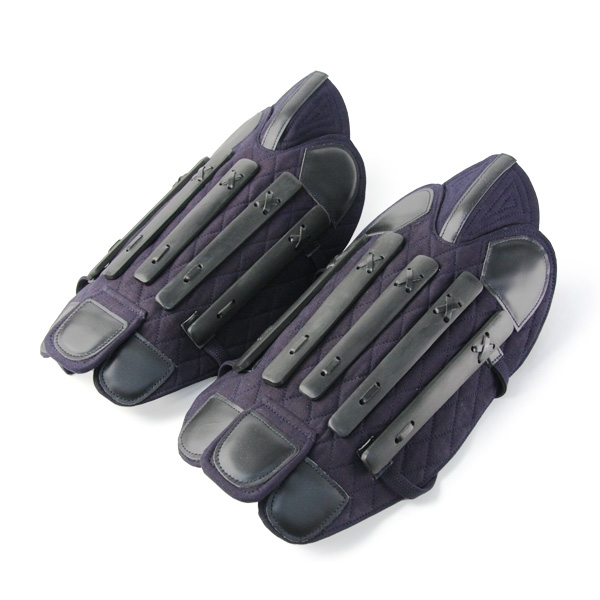 | Naginata Sune-ate (shin protectors)
• Available in 4 sizes (up to 52cm) • Thickly padded • Ankles and knees extra protections • Reinforced himo (ties) Tozando Price: $127.30 |
Wood essence (see below) can be your first guide, but as we will see it is not always 100% reliable. Begin with a standard one, and make your way with experience to longer and heavier ones.
But it is not easy to pick the right weight especially when ordering online. So why not round up some fellow practitioners and order a pack, so everyone can weight and pick the naginata right for him/her?
Beyond weight
But more important than weight, is rigidity and density: these will most influence the “feel” of your naginata.
One of the worst things is the naginata bending or wobbling during execution of techniques. And this does not always relate to sheer weight (as in “heavy=rigid”), but more to the wood quality and craftsmanship.
You can find very light akagashi naginata (reputedly less dense) that will have the perfect balance and integrity during movement. Good quality naginata do not flex too much during fast strikes. If you have the chance, always test flexibility above weight. A good naginata is supple on impact but if it bends back and forth madly only when you wave it, no good. That might happen with naginata way too long for their girth (bad balance, improper craftsmanship).
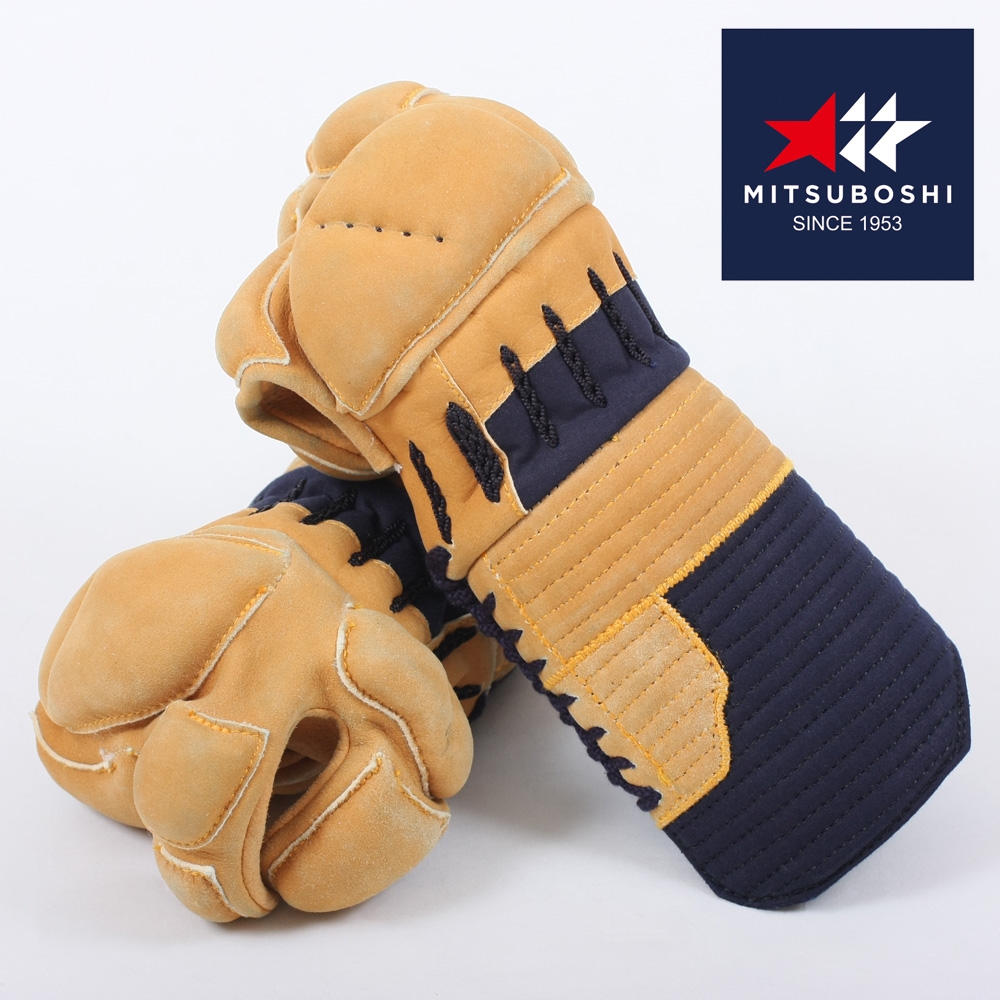 |
Mitsuboshi Naginata Kote
These 6mm machine-stitched Naginata Kote are the best available amongst our machine-stitched Naginata Kote lines. The Kote are made using genuiine smoked Deerskin, which is generously used for both knuckles, palms and reinforements. Tozando Price: $235.00, including shipping |
Akagashi or Shirakashi.
Being more expensive doesn’t mean being better for everything.
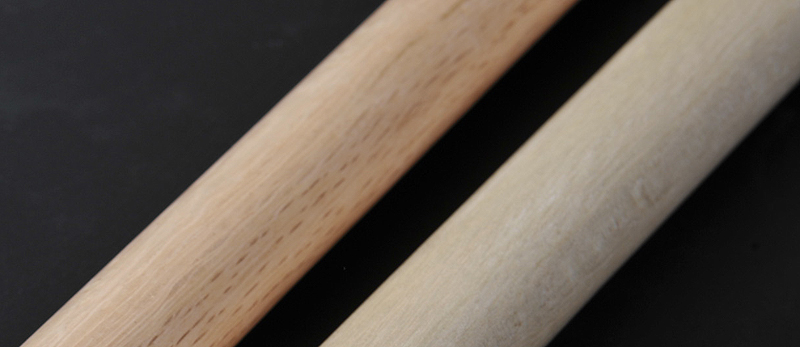
➤Shiragashi is usually denser, and then more durable and resistant that its red cousin.
➤Akagashi is preferred to make children’s naginata, and for beginners.
But this is not rocket science, and depending on the material quality (age of the wood) you can find sometimes deep hardwood akagashi that will be denser than young shirakashi.
Length
Modern Naginata had been designed for junior and high school girls in the 50’s. Also, being a competitive sport, regulations on length would be necessary, be it for fairness in shiai, or balance in engi6. Hence the length regulations that we find in the official refereeing manuals of the AJNF.
So obviously, chose a weapon that helps you performing the techniques correctly (without having you hand wildly out of place). Most techniques have “checkpoints” that must be respected (rear hand being one elbow length of the ishizuki when in chudan-no-kamae, front hand at one palm from sen-dan-maki when blocking men strike…). If you end up gripping the wrong parts or being unable to slide the naginata properly, it could be that your naginata is not the right length for your size and/or your current level.
It is said that when you are in proper chūdan (middle stance), your front end should be at the gravity center of the naginata. It is also said that when in shizentai (natural waiting position), the sen-dan-maki should be above your eyes. Should…
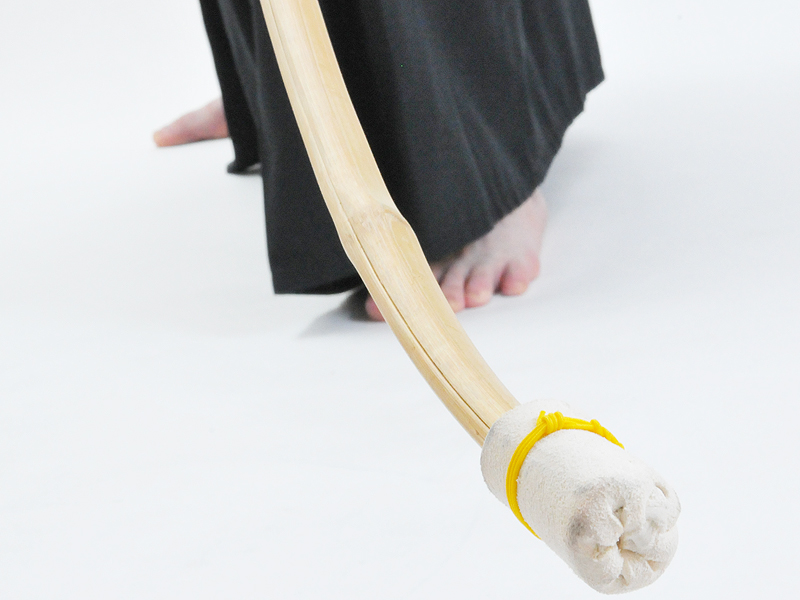
That can be problematic when you size or bulk set you apart from the “Japanese High School Girl” standard.
It must be known that the regulations authorise length anywhere between 210 and 225cm. The Standard model (around 220cm) will suit most adults. Our Full Length model (225cm) will give the comforting room to people over 180cm. You’ll be amazed by what 5cm can do!
It is also possible to make shorter naginata for small kids. In Japan children usually start around in Elementary School (6/7 years old), but have been assistant in a class where Kindergarten kids came to practice (and there is nothing cuter in the world!).
Likewise, kata7 naginata are traditionally 7 shaku. This length came to use in two of the main Naginata koryū that led to the birth of modern naginata, namely Tendō-ryū and Jikishinkage-Ryū. Those schools were instrumental in the creation of Naginata that could be taught to large groups, and standardization was a step towards that. However, the modern kata naginata regulations authorize between 210 and 215cm.
Here again, our workshop can handle special custom orders for particular requirements.
Do not hesitate to contact us with any special demand. You’ll be surprised at what 3cm can do!!
Thank you for reading down to this point! We hope this was at least entertaining and informative. Do not hesitate to contact us if you have questions about naginata crafting.
__________
1- All Japan Naginata Federation, ruling body of the modern sport martial art.
2- reflecting either radial or tangential surface of wood structure.
3- also called bokken, wooden one edged sword used in Japanese swordsmanship.
4- striking down your opponent naginata with a warping motion of your own.
5- Here we go more on teaching considerations and also simple personal preferences, but we will try to give tips to check with your teachers advices and your personal tastes.
6- engi kyōgi, a form of Naginata competition based on paired pre-established exchange of techniques..
7- Modern Naginata has a set of 7 kata, performed in pairs, embodying the essence of the art.
 | Did you like what you've just read? Check this out. |



